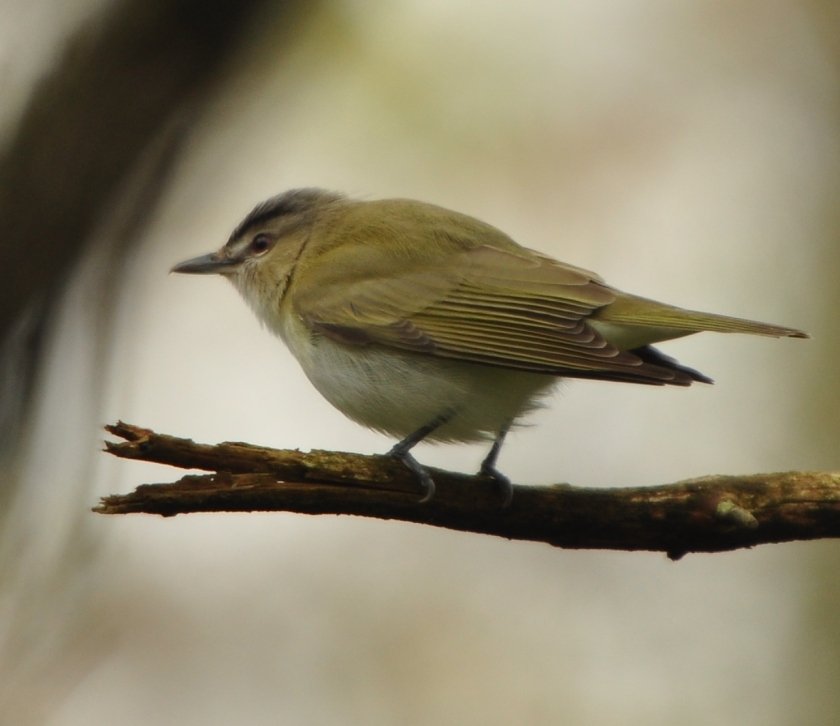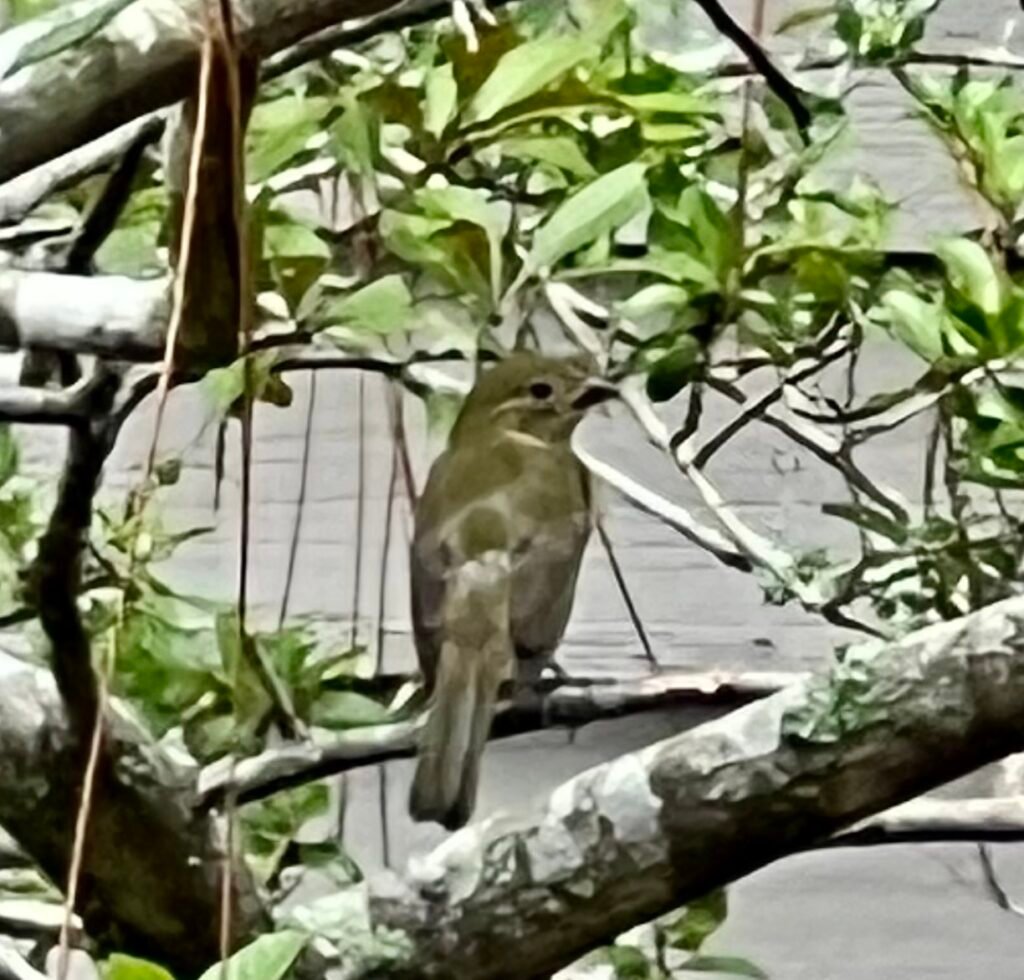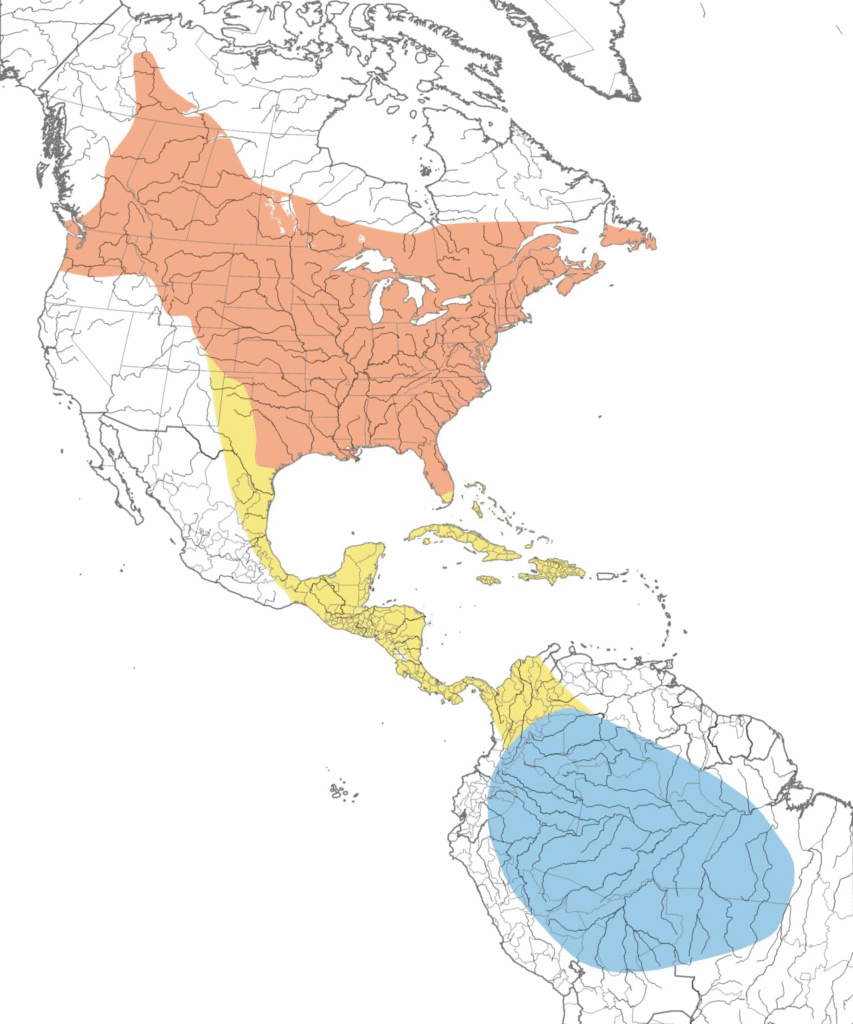
This little 5.1 inch Red-eyed Vireo is a chunky vireo with a long, angular head, thick neck, and a strong, long bill with a small but noticeable hook at the tip. The body is stocky and the tail fairly short. They are olive-green above and clean white below with a strong head pattern: a gray crown and white eyebrow stripe bordered above and below by blackish lines. The flanks and under the tail have a green-yellow wash. Adults have red eyes that appear dark from a distance; immatures have dark eyes. They love the treetops and blend in due to their coloring. Large expanses of deciduous forest, particularly deciduous trees with large leaves (such as maples), typify Red-eyed Vireo habitat during the breeding season.
The red-eyed Vireo song is often described as a series of short, two-to three-note phrases, each slightly different, sung over and over again all day long. https://www.allaboutbirds.org/guide/Red-eyed_Vireo/overview. They have been nicknamed the preacher bird because their short, repetitive phrases sound like they’re delivering a endless sermon. “Here I am… where are you?… up in the tree…look at me!”

Red-eyed Vireos eat invertebrates as well as seeds and fruits. Their diet changes substantially throughout the year: it’s mostly insects during summer, especially caterpillars which can account for 50% of their summer diet. As fall migration approaches, the amount of fruit in their diet rises. During migration they eat both insects and fruit, but are almost entirely fruit-eaters on their wintering grounds in South America.
The female chooses a fork in a branch of a midstory to understory tree or shrub. The fork is typically shaded, concealed from above by vegetation, and far enough from the trunk to provide an unobstructed 360 degree view. Most nests are in deciduous trees, at an average height of 10 to 15 feet.
| Clutch Size: | 1-5 eggs |
| Number of Broods: | 1-2 broods |
| Egg Length: | 0.8-0.9 in (2-2.4 cm) |
| Egg Width: | 0.5-0.9 in (1.2-2.4 cm) |
| Incubation Period: | 11-15 days |
| Nestling Period: | 10-12 days |
| Egg Description: | Dull white with sparse, sepia speckling. |
| Condition at Hatching: | Born helpless, with eyes closed and sparse down on the pinkish orange skin of their heads, backs, and wings. |
Red-eyed Vireos are numerous and despite some local declines, overall populations increased by approximately 0.6% per year between 1966 and 2019, according to the North American Breeding Bird Survey.
Fun Facts:
They are marathon singers – a single male can sing over 20,000 songs in one day during breeding season.
They are long distance travelers – despite the small size, they migrate between North America and South America, often crossing the Gulf of Mexico in a single overnight flight.
They are surprisingly tough birds for their size – they can hold their own against larger birds when defending a nest.

Article submitted by: Melanie Jerome
Photographs provided by: Joleen Ardiaolo and unknown
References: Cornell Lab of Orinthology, Audubon Bird Guide and Birds of the World
This blog post is part of a series SIB will publish on a regular basis to feature birds seen in the area, both migratory and permanent residents. When possible we will use photographs taken by our members. Please let us know if you have any special requests of birds you would like to learn more about.
